Pros
Cons
Introduction
Front
{{section_header}}{{section.name}}{{/section_header}}
The front of the {{product.name}} features a steel-rimmed door at its center, with controls above, a detergent drawer above and to the right, and a flip-down door for filter access.
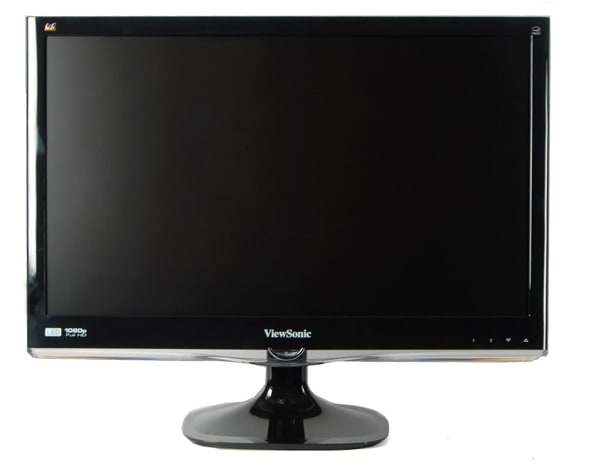
The bottom left corner of the device's front is where you'll fin the unit's filter.
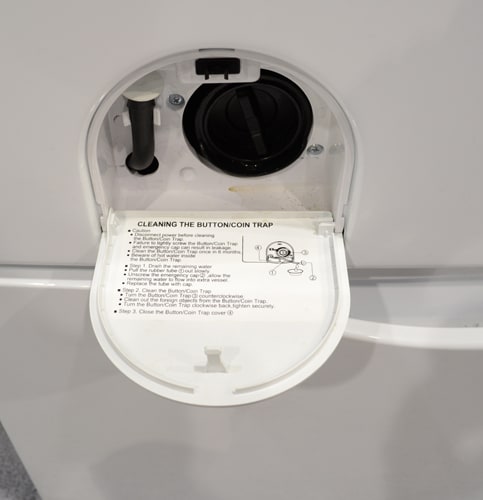
Controls
{{section_header}}{{section.name}}{{/section_header}}
Each cycle is selected with a turn of the control knob. The knob turns a bit too smoothly for our liking: we would have preferred a click at each selection.
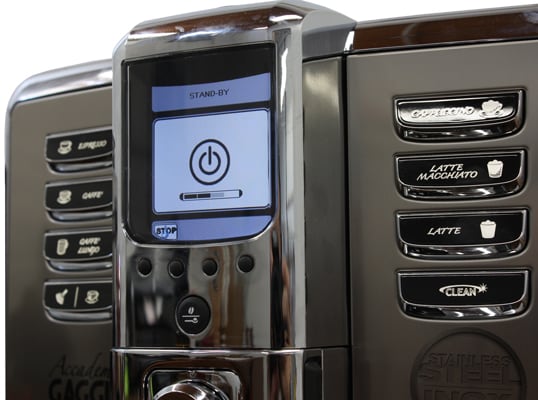
The controls are very clearly printed on the side of the washer. The pause button even has the pause video playback symbol for easier readability. The cycle customization controls further right will let you create your own wash cycle. If you like customizing your washer experience, this control panel is for you.
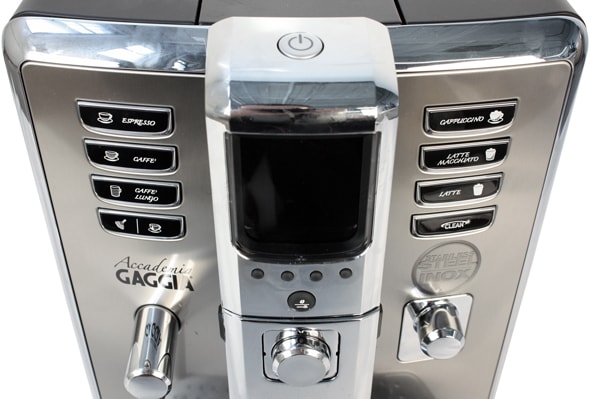
Drawer
{{section_header}}{{section.name}}{{/section_header}}
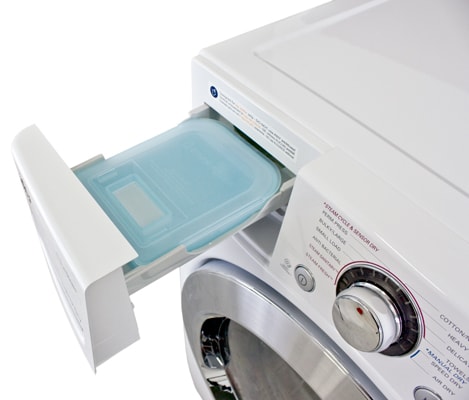
Interior
{{section_header}}{{section.name}}{{/section_header}}
The washer's door opens to the left, and has a fairly spacious inner chamber. The inner chamber has a rough texture and three agitators spread evenly.
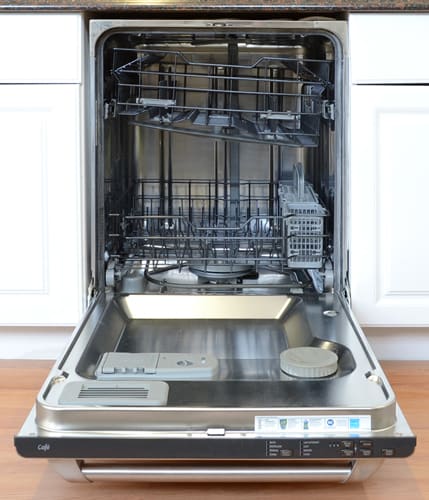
The interior of the CDWT980VSS.
Sides
{{section_header}}{{section.name}}{{/section_header}}
The sides have no features other than the carrying handles. We definitely appreciate these, as they make moving the unit significantly easier.

Olympus SZ-31MR iHS side views
Back
{{section_header}}{{section.name}}{{/section_header}}
The back of the unit has a hookup for cold and hot water, an output hose, and comes with a three-prong plug.
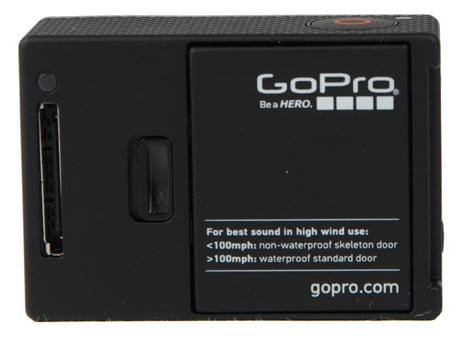
The water hook-ups are color-coded and clearly labeled. Twice. It would be difficult to get the two mixed up.
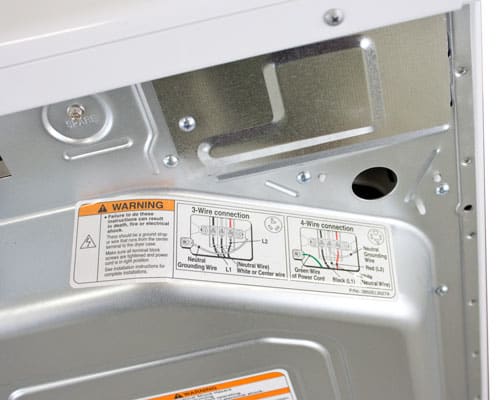
Electricity Use
{{section_header}}{{section.name}}{{/section_header}}
The {{product.name}} uses a moderate amount of electricity: we calculated the cost over a typical year at about 65 cents.
Water Use
{{section_header}}{{section.name}}{{/section_header}}
The amount of water used by the wash cycles of the {{product.name}} ranged from 8.62 gallons for the Express Wash cycle up to 22.25 gallons for the Whitest Whites mode.
Cost Per Wash
{{section_header}}{{section.name}}{{/section_header}}
We calculated the cost per wash of the {{product.name}} at between 6 cents for the Normal cycle and 15 cents for the Whitest Whites cycle. Again, that is a significant range of costs, indicating the wide range of cycles this washer offers.
Yearly Running Cost
{{section_header}}{{section.name}}{{/section_header}}
We calculated the yearly running cost of this washer at $31.13, based on an average of 392 loads using a range of wash cycles. That's in the middle of the range for washers of this type.
{{comparison_bars title="Yearly Running Cost", attribute="Yearly Running Cost", xLabel="Cost to run over a typical year ($)"}}
Washing Speed
{{section_header}}{{section.name}}{{/section_header}}
Washing Cycles
{{section_header}}{{section.name}}{{/section_header}}
8 wash cycles are on offer from the mode dial of this washer, ranging from the express wash to a long wash for heavily soiled items..
Customization
{{section_header}}{{section.name}}{{/section_header}}
The other buttons to the left of the control dial are the cycle modifiers, which allow you to tweak the wash cycle. These control the wash/rinse temperature, the spin speed, the soil level (which affects how long the wash runs for) and the volume of the chime. Some of these modifiers are restricted in certain cycles: the Delicates cycle, for instance, restricts the wash temperature to cold and warm, so you can't accidentally wash your delicates in extra hot water.

Additional Wash Options
{{section_header}}{{section.name}}{{/section_header}}
In addition to the wash cycles described above, the Kenmore 40272 offers six other washing options: stain treat, 2nd rinse, auto soak, delay start and clean washer. The stain treat uses warm water at the start of the cycle to boost the detergent effectiveness, and the auto soak adds a 30 minute pre-soak to the cycle. As the name suggests, the clean washer option is designed to clean out the inside of the washer if it has not been used for a while.

Washing Options
{{section_header}}{{section.name}}{{/section_header}}
Detergent Dispenser
{{section_header}}{{section.name}}{{/section_header}}
The detergent tray is easy to open and use, with four clearly marked sections for pre-wash, main wash, fabric conditioner and liquid bleach. This makes sense at first glance, but this machine doesn't offer a pre-wash cycle, so that space is wasted. The main wash section comes with a small tray for liquid detergent that has clear markings for the suggested and maximum levels. This tray should be removed if powder detergent is used.

Washer Door
{{section_header}}{{section.name}}{{/section_header}}
The door is opened with a sharp tug on the inlaid handle. It doesn't require a lot of force to open, and it shuts easily without needing to be slammed hard.

The interior of the CDWT980VSS.
Ease of Use
{{section_header}}{{section.name}}{{/section_header}}
The 40272 is an odd combination of the simple and the complex: the washer has an easy to open door and detergent dispenser, but the controls are somewhat complex and could confuse many users. Although the modifier buttons do restrict you from settings that could ruin your clothes (such as putting your delicates in for an extra hot wash), it might still be too easy for someone to accidentally press one of the buttons and wash a mixed load in hot water. The sheer number of buttons and lights could also intimidate those who are upgrading from an older rotary-style control.
Controls
{{section_header}}{{section.name}}{{/section_header}}
The front of this washer is awash with buttons and dials that control the wash settings. The main one is the control knob where you set the wash cycle from the 8 options on offer: you spin this and the selected cycle is indicated by a green light. Above this is an unlabelled LCD display that shows the expected length of the cycle, and a series of LED lights that show which options the chosen cycle will use. The lights indicate if load sensing is used (where the washer weights the load to determine how much water to use) and show the progress of the wash from wash to rinse to spin. Around the edges of the grey panel are a series of 6 illuminated buttons that choose the extra wash options: stain treat, 2nd rinse, auto soak, delay start, clean washer and control lock. The delay start allows you to delay the start of the washing cycle for up to 19 hours in one hour increments.


Comparison
{{section_header}}{{section.name}}{{/section_header}}
The Kenmore is the cheaper of these two washers by $120 (priced at $779, against the $899 of the Whirlpool). But the Whirlpool was slightly better in our washing performance tests, so it could be worth the extra. Both washers offer a decent selection of cycles and other features, but the Whirlpool offers a couple of features that are not present on the Kenmore, such as the EcoBoost mode.
Normal Stain Performance
Comparison
{{section_header}}{{section.name}}{{/section_header}}
These two washers are very similar (the Kenmore is actually made by LG), but there are differences. The Quick Wash cycle on the Kenmore is longer, and the other cycles have been tweaked as well, which leads to slightly better performance. The LG does offer a wider selection of wash cycles and features, though, so it’s a close call between these two.
Normal Stain Performance
Comparison
{{section_header}}{{section.name}}{{/section_header}}
These two models are similarly priced, with the Kenmore costing $40 more. For the extra cash you get slightly better washing performance and a wider range of wash cycles. But it's a close call, and the easier to open and close door on the Kenmore might be worth the extra, especially for older users.
Normal Stain Performance
Efficiency
{{section_header}}{{section.name}}{{/section_header}}
The {{product.name}} would cost $31.13 to run over a typical year, which is in the middle of the range for front-loading washers.
Performance
{{section_header}}{{section.name}}{{/section_header}}
This washer had decent washing performance, with the most effective cycle being the Whitest Whites cycle. The Express Wash cycle was not particularly effective, though, and would not be able to shift anything but very slight stains.
Features
{{section_header}}{{section.name}}{{/section_header}}
This washer offers a good selection of cycles, and a number of features that make it more flexible.
Meet the tester

WasherDryerInfo.com Staff
Editor
WasherDryerInfo.com Staff is a valued contributor to the Reviewed.com family of sites.
Checking our work.
Our team is here to help you buy the best stuff and love what you own. Our writers, editors, and experts obsess over the products we cover to make sure you're confident and satisfied. Have a different opinion about something we recommend? Email us and we'll compare notes.
Shoot us an email